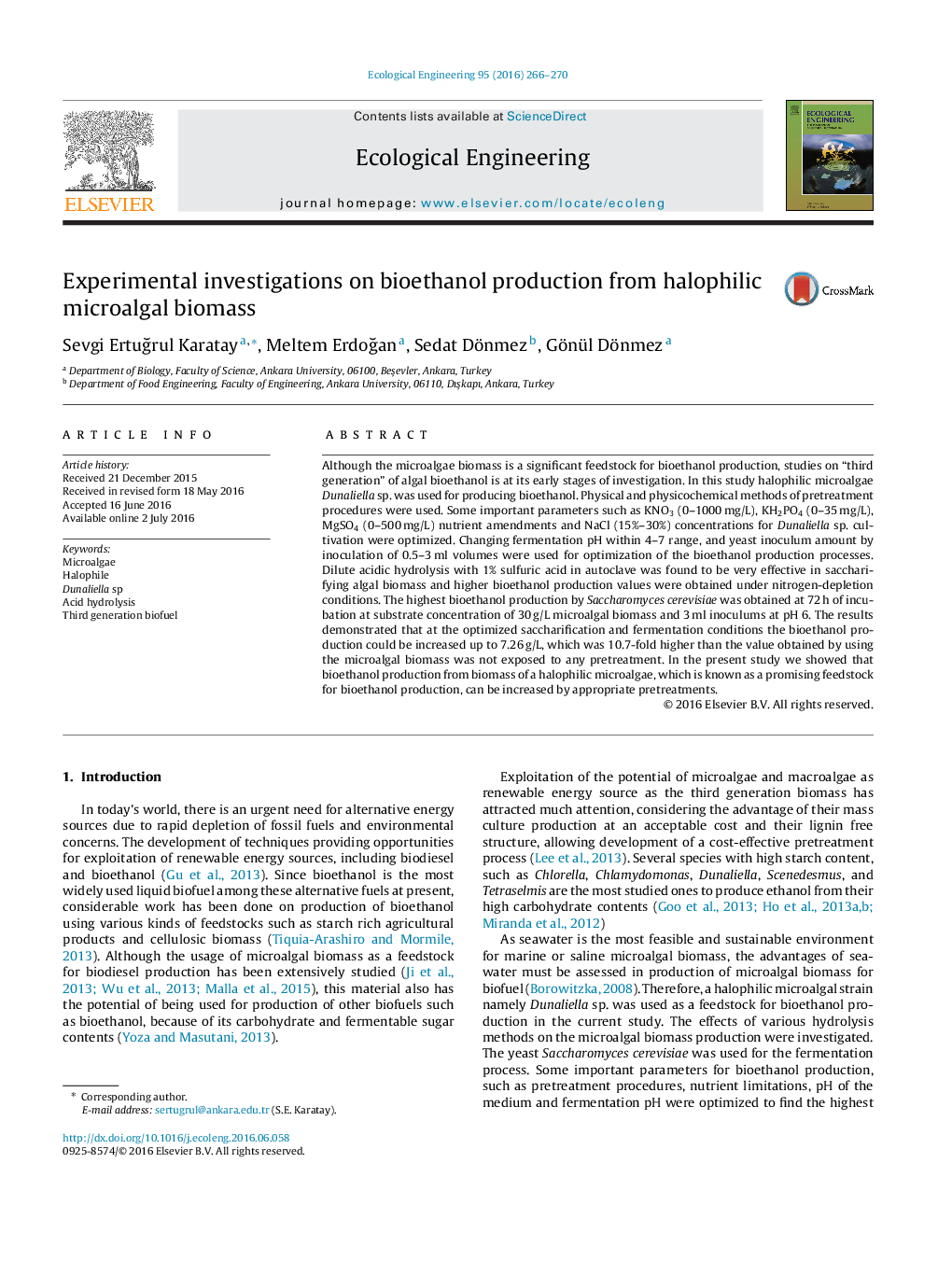| Article ID | Journal | Published Year | Pages | File Type |
|---|---|---|---|---|
| 4388451 | Ecological Engineering | 2016 | 5 Pages |
Abstract
Although the microalgae biomass is a significant feedstock for bioethanol production, studies on “third generation” of algal bioethanol is at its early stages of investigation. In this study halophilic microalgae Dunaliella sp. was used for producing bioethanol. Physical and physicochemical methods of pretreatment procedures were used. Some important parameters such as KNO3 (0-1000Â mg/L), KH2PO4 (0-35Â mg/L), MgSO4 (0-500Â mg/L) nutrient amendments and NaCl (15%-30%) concentrations for Dunaliella sp. cultivation were optimized. Changing fermentation pH within 4-7 range, and yeast inoculum amount by inoculation of 0.5-3Â ml volumes were used for optimization of the bioethanol production processes. Dilute acidic hydrolysis with 1% sulfuric acid in autoclave was found to be very effective in saccharifying algal biomass and higher bioethanol production values were obtained under nitrogen-depletion conditions. The highest bioethanol production by Saccharomyces cerevisiae was obtained at 72Â h of incubation at substrate concentration of 30Â g/L microalgal biomass and 3Â ml inoculums at pH 6. The results demonstrated that at the optimized saccharification and fermentation conditions the bioethanol production could be increased up to 7.26Â g/L, which was 10.7-fold higher than the value obtained by using the microalgal biomass was not exposed to any pretreatment. In the present study we showed that bioethanol production from biomass of a halophilic microalgae, which is known as a promising feedstock for bioethanol production, can be increased by appropriate pretreatments.
Keywords
Related Topics
Life Sciences
Agricultural and Biological Sciences
Ecology, Evolution, Behavior and Systematics
Authors
Sevgi ErtuÄrul Karatay, Meltem ErdoÄan, Sedat Dönmez, Gönül Dönmez,
